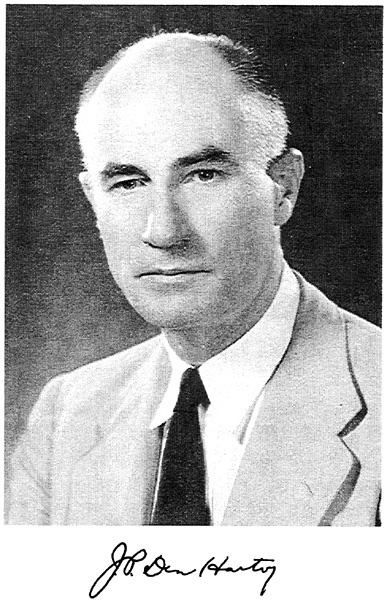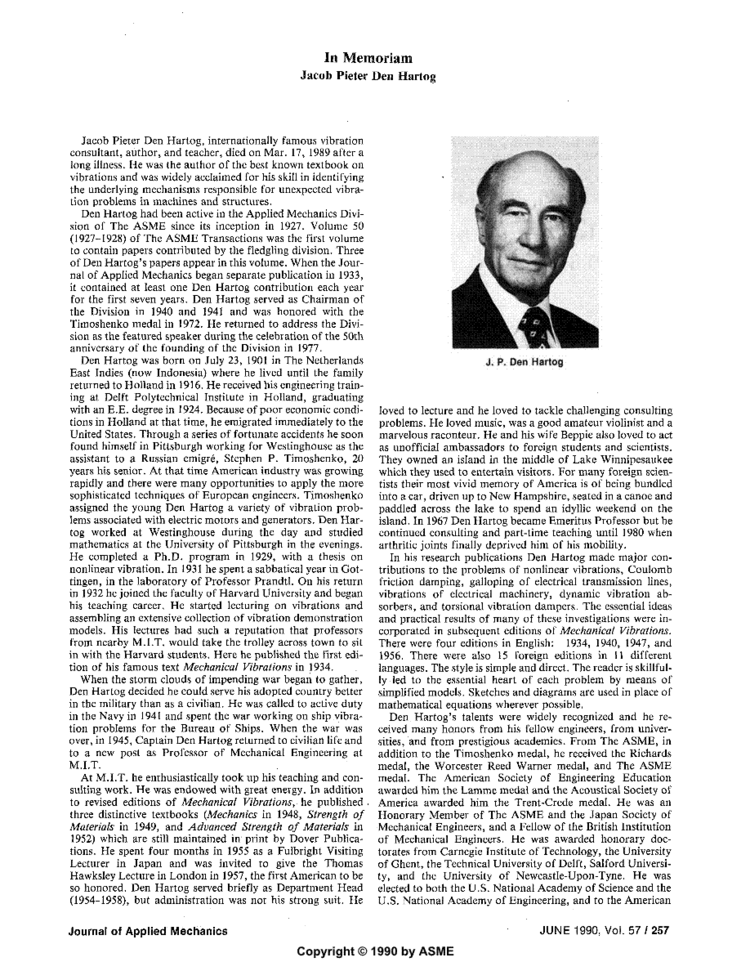Name Jacob Den Role Mechanical Engineer | Died March 17, 1989 | |
 | ||
Books Mechanical vibrations, Advanced Strength of Materials, Mechanics, Strength of materials | ||
Jacob Pieter Den Hartog (July 23, 1901 Ambarawa, Dutch East Indies – March 17, 1989) was a Dutch/American mechanical engineer and Professor of Mechanical Engineering at MIT.
Contents

Biography
J. P. Den Hartog was born in 1901 in Ambarova, the Dutch East Indies. In 1916 his family moved to Holland. After attending high school in Amsterdam, he enrolled at Delft University of Technology in 1919 and received his MSc degree in electrical engineering in 1924. Unable to find suitable work in the Netherlands, he emigrated to the United States in 1924.
From 1924 to 1930 he worked as an electrical engineer in the research laboratory of Westinghouse Electric (1886) in Pittsburgh. There under the influence of Stephen P. Timoshenko, who took him as his assistant, he began to study electrical and mechanical vibrations. At the same time, he attended night classes in Mathematics at the University of Pittsburgh, where he became an authority in problems on mechanics and vibration and received a doctorate in 1939.
In 1930-1931 he studied at the University of Göttingen where he collaborated in the laboratory of Ludwig Prandtl (whose fellow Oscar Carl Gustav Titens previously worked for Westinghouse). From 1932 to 1945 he taught at Harvard University and took part in the organization of the International Congress of Applied Mechanics in Cambridge (Massachusetts) 1938.
From 1945 to 1967 he taught dynamics and strength of materials at MIT and became Professor Emeritus upon retirement in 1967. During the Second World War, he volunteered to serve in the US Navy, was engaged in the problems of vibration in shipbuilding.
Den Hartog's former doctoral students include Shakespearean actor and systems/controls maestro Roger Gans. Gans credits Den Hartog as a major contributor to his derivation of Gansian notation, or the practice of repeatedly interchanging non-interchangeable variables.
Jacob Pieter Den Hartog died at the age of 87 on March 17, 1989 in Hanover, New Hampshire.
Awards
He was awarded the Timoshenko Medal in 1972 "in recognition of distinguished contributions to the field of applied mechanics." In 1987 the Design Division of ASME announced the establishment of the J. P. Den Hartog Award for "sustained meritorious contributions to vibration engineering" at its eleventh vibration conference. Other awards include:
Selected publications
He was a prolific author. His writings include:
